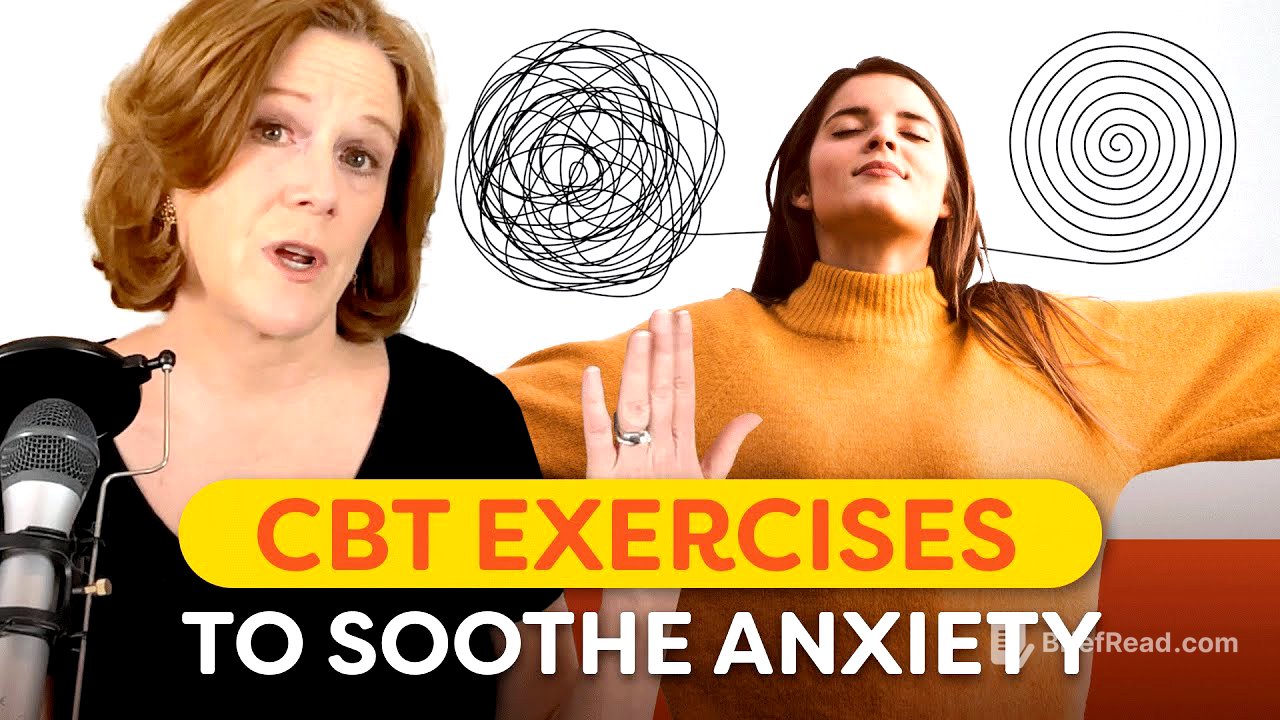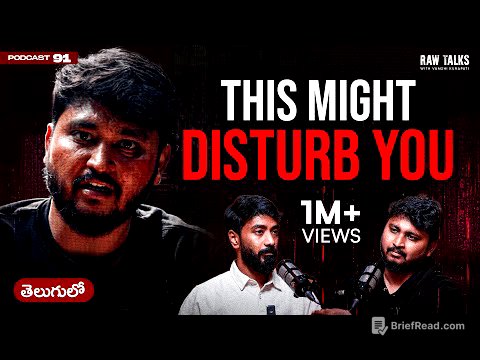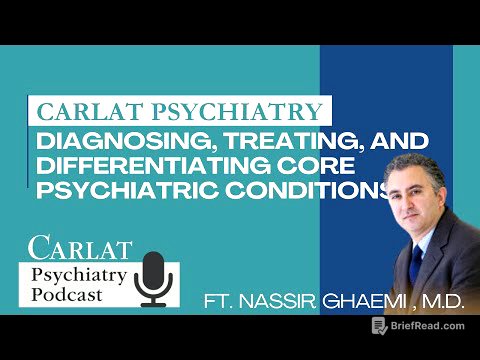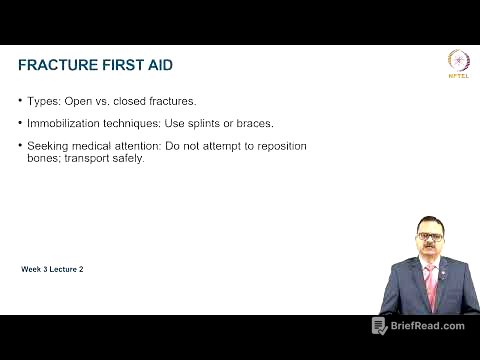TLDR;
This video provides an overview of cognitive behavioral therapy (CBT) techniques for managing anxiety. It explains the cognitive-behavioral cycle, emphasizing the connection between thoughts, feelings, and behaviors, and offers practical exercises to help break the cycle of anxiety. The video also touches on the importance of accepting uncertainty and powerlessness, and introduces concepts like cognitive diffusion and distortions.
- Understanding the cognitive-behavioral cycle is key to managing anxiety.
- Thoughts are just thoughts, and we can create distance from them.
- Accepting uncertainty and powerlessness is crucial for peace.
Intro [0:00]
The video introduces the topic of anxiety and how it manifests differently in individuals, including physical symptoms and thought patterns. It aims to provide understanding and practical exercises to help quiet anxiety and change the cycle of anxious thoughts and behaviors.
CBT summary [1:04]
The core of managing anxiety lies in understanding the cognitive-behavioral cycle. This cycle involves the interplay of thoughts, feelings, and behaviors, where a trigger event leads to a thought or feeling, which then influences behavior. The sympathetic nervous system, responsible for the body's "fight or flight" response, is often overstimulated in anxious individuals, while the parasympathetic nervous system, which promotes calm and relaxation, is underdeveloped. The key to changing the anxiety cycle is to intervene by modifying thoughts or behaviors, as changing feelings directly is difficult.
Exercise 1 [6:19]
The first exercise focuses on recognizing that thoughts are just thoughts and not necessarily truths. It introduces the concept of the "Observer mind," which allows one to observe their thought patterns with some distance. Cognitive diffusion is introduced as a way to create distance from thoughts by reframing statements like "I'm having anxiety" to "I'm having an anxious thought." This helps to weaken the grip of anxious thoughts and reduce their impact.
Exercise 2 [8:26]
The second exercise involves identifying and challenging cognitive distortions, which are distorted thought patterns that contribute to anxiety. Examples of cognitive distortions include catastrophizing (projecting a horrible ending), black and white thinking (seeing things as all good or all bad), and magical thinking (making assumptions without evidence). Recognizing these distortions helps to create distance from the thoughts and question their validity.
Exercise 3 [10:05]
This exercise aims to strengthen the parasympathetic nervous system by using the power of imagination. It involves visualizing a calming and enjoyable place or activity, focusing on the sensory details such as smells, sounds, and feelings. This practice can be done daily to provide a mini-oasis of calm and help the body relax, regardless of whether the anxiety is cognitive or somatic.
Exercise 4 [11:36]
The fourth exercise encourages individuals to identify and feel other underlying emotions that may be masked by anxiety. It suggests that anxiety can sometimes be a way of avoiding other difficult feelings like sadness, regret, or anger. By acknowledging and feeling these emotions, individuals can create space for lighter, more joyful feelings.
Meditation [13:04]
Meditation, particularly guided meditation, is recommended as a tool for developing the Observer mind and the ability to sit with feelings. While some individuals with anxiety may find meditation challenging, it can be a valuable practice for strengthening the Observer mind and promoting mindfulness. Apps like Aura Health, which offer guided meditations, can be helpful for beginners.
Exercise 5 [14:35]
The final exercise involves setting aside a specific time to write down all anxious thoughts and then symbolically placing them in a box. Throughout the day, when anxious thoughts arise, individuals can imagine pulling them out of their head and putting them in the box. This technique provides a contained period for worrying and helps to focus on more positive thoughts during the rest of the day.
OCD [15:45]
The video briefly addresses anxiety related to OCD, noting that while the tips provided may be helpful, they may not be sufficient for this specific type of anxiety, especially when compulsions are involved. It suggests that the treatment for OCD is slightly different, emphasizing the importance of not engaging in compulsive behaviors.
Understand this about anxiety [16:13]
The most important thing to understand about anxiety is the acceptance of powerlessness over certain things and the uncertainty of life. Attachment to a particular outcome drives anxiety, and the denial of uncertainty exacerbates it. Practicing acceptance of powerlessness and uncertainty can lead to peace, even though it may initially increase anxiety.









